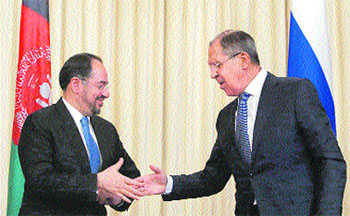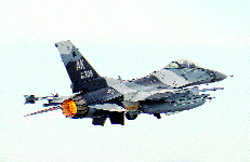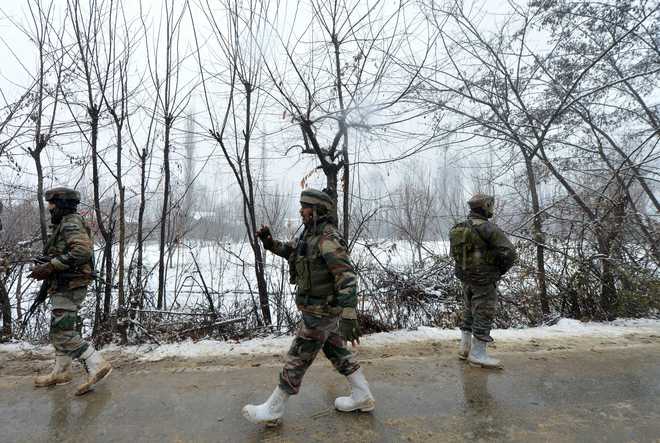The military’s preoccupation with importing hardware, irrespective of its appropriateness or cost, must change, writes BHARAT KARNAD
The unambitious and low-key budget is emblematic of the Narendra Modi government’s approach of trusting in only small, cautious, steps. So nobody expected that the defence allocations would be used to reorient an Indian military that’s been long in the rut. This would have been a disruptive thing to do to shake up the armed services which, owing to weak political direction and oversight have compelled governments to rubber-stamp whatever they decide is in the national interest.
 ARVIND YADAV/HT PHOTOSoldiers display war skills at Army Day Parade, Delhi Cantt, New Delhi, January 15. (Representative photo)
ARVIND YADAV/HT PHOTOSoldiers display war skills at Army Day Parade, Delhi Cantt, New Delhi, January 15. (Representative photo)
Predictably, defence allocations of ₹2.74 trillion falling to 1.63% of GDP has sparked concern, while ignoring the fact that an enlarged budget would have led to the squandering of the taxpayer’s money anyway. The problem at heart is this: The Indian military weighs its self-worth purely in terms of in-date weapons. Absent contrary political instructions as corrective, the preoccupation is with importing hardware, whether or not this is cost-effective, or even appropriate. The result is a mangled decision matrix in which instead of threats and grand strategy defining strategy, force structure, and weapons requirements, in that order, the existing force composition dictates the threat and the choice of armaments and strategy. Whence, the army’s money-guzzling three strike corps, that are way in excess of need, have monopolised the army’s modernisation and maintenance budgets, even though this capability is usable only in the desert and the plains, justified only by the “Pakistan threat”, and driven by a largely unimplementable ‘Cold Start’ strategy.
The Modi government has talked smart, not acted smart. It has failed to channel efforts and resources to secure military capabilities principally to deter China, which would, naturally, also take care of any contingency involving Pakistan, and fetch a larger strategic and international political dividend besides. Indeed, the raising of the only mountain strike corps (17 Corps) is languishing for want of funds. A desperately needed reorientation of the armed services will have to be rammed down resisting throats. Left to itself, the Indian military, which seems incapable of transformative change, will stick to its outdated outlook, operational bearing and plans.
The Modi regime can use the fact of scarce financial resources as lever to change the military mindset as is routinely done in the more mature democracies. Selective approval of expenditure schemes can re-shape and redirect the armed services. A start along these lines can, perhaps, be made to prepare for next year’s budget. The defence capital (or procurement) budget — the nub of the issue — is, in any case, declining. It was ₹945.88 billion in 2015-16, decreased by 8.7% to ₹863.4 billion last year, plateauing at ₹864.88 billion in this fiscal, except only two-thirds of this sum will be actually available for purchases. It is a trend that’s likely to continue.
Considering that in excess of ₹3.71 lakh crore( or, roughly $55 billion) are already committed to purchasing weapons systems from abroad, and 10% as first payments in hard currency amounting to some $5 billion on the numerous contracts already made, the only option is to shrink the numbers of units contracted for, and to adjust the payments already made against the reduced outgo.
If the idea is to channel monies to realise more rational forces and capabilities, the signal has to be sent to the armed services that the government will not tolerate business-asusual. Certain programmes are ripe for down-scaling and would set a precedent. Thus, the Field Artillery Rationalization Plan estimated to cost $12 billion can be shaved to $4 billion, leaving enough hardware to meet the requirements of a single, compact, consolidated, corps-strength mobile warfare capability on the western border.
The deal for 464 Russian T-90MS tanks costing $4.3 million each, requires termination, not least because it is a buy at the expense of the indigenous Arjun Main Battle Tank that comprehensively out-performed the T-90 in test trials in all aspects in all terrains. This is an outrage requiring speedy rethink, if defence minister Manohar Parrikar is serious about not cutting the “indigenous” out of the government’s ‘Make in India’ policy. The plan for new generation infantry combat vehicle numbers too will require pruning to around 730 units costing ₹52.5 billion, instead of 2,200 new ICVs for ₹157.5 billion.
A similarly ruthless attitude should lead to the nixing of the 36 Rafale aircraft deal for $12 billion — engagement of Modi’s ego to this transaction notwithstanding, especially as the air force sees it as a means of pushing the government into buying 90 more of this supposedly “medium” multi-role fighter — a category of aircraft known to no other major air force. It will save India the down payment of ₹97 billion. The navy, likewise, should be strongly dissuaded from accepting the American EM A LS( electro-magnetic aircraft launch system) costing $533 million each for the second and third Kochi-built aircraft carriers.
Savings from such hard-headed procurement decisions will make available funds for appropriate capabilities, and indigenous design and technology projects, such as the Tejas 1A and Mk-II, and the navalised LCA, ordered to proceed on the concurrency principle of induction along with capability refinement, senior air force and navy brass made accountable for their success a procedure followed by all major militaries.
As this can happen within the time-frames for induction of imported aircraft, imports are pre-empted. The freed-up funds should also be invested in designing, developing, and producing a small 25 ton tank with an engine optimised for high-altitude operations to equip three mountain strike corps. Bharat Karnad is professor at the Centre for Policy Research, and author of Why India is Not a Great Power (Yet)
























































 ARVIND YADAV/HT PHOTO
ARVIND YADAV/HT PHOTO






























































